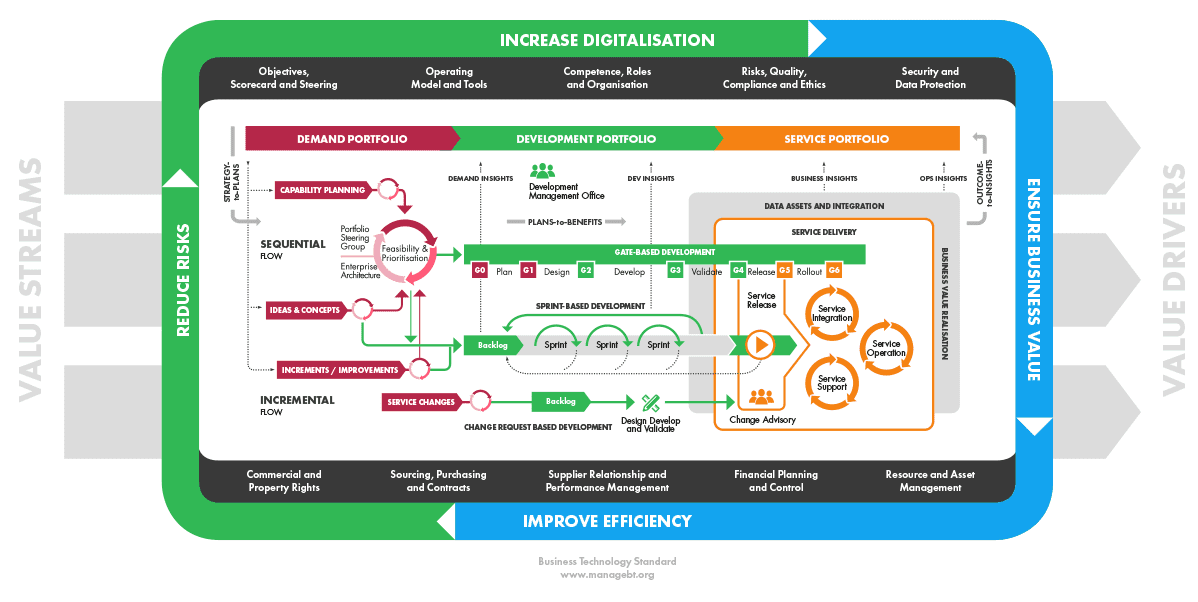Service planning has an essential role in implementing the business technology strategy. It contributes to strategic planning and co-operates with enterprise architecture planning.
Service owners and Business Information Officers (BIO) have service planning accountability with the support of service managers under the guidance of the Business Technology Management Officer (BTMO).
Typical organisations have dozens or hundreds of business technology products, solutions and services which are split to logical domains. BIOs are responsible for business domain specific products, solutions and services while service owners’ responsibility covers business function specifics and common services.
Service planning begins by defining the purpose of the service domain. There should always be a valid reason for an organisation to spend money on a specific service domain and invest on further development. This is valuable input to strategic planning which decides on how the money is allocated.
The next step, going on in parallel with financial planning, is to plan the service offering. i.e., the products, solutions, services, users, service promise and related costs. This is a continual activity and updating the service catalogue accordingly is needed for efficient service portfolio management.
The third step is to plan the development roadmap in co-operation with Enterprise Architecture (EA). EA-centric capability planning defines transformation from current state to target state in the form of service domain-specific roadmaps. A roadmap is a portfolio of development initiatives in a timeline. Each domain usually has a named domain architect who plans the logical order of development initiatives within the domain and with the corresponding BIO or service owner. The Chief Enterprise Architect and the Business Technology Management Officer (BTMO) ensure that domain and cross-domain development initiatives are prioritised sensibly.
Figure 2.3.1 Service planning key elements
The planned development initiatives require financing and therefore, financial planning, service catalogue planning and roadmap planning each form an iterative loop. The major sourcing activities and commercial breakpoints are service planning topics as well. In some situations, a sourcing initiative is required to achieve a major improvement in cost or quality or there is a need for the operational model to change in the form of insourcing or outsourcing. Strategic planning and service planning have joint interest in selecting the prime service providers. Further on, service planning drives more specific supplier portfolio planning and optimisation.
Yet another activity of service planning is to plan business continuity. Service is given adequate business criticality classification which determines the target for the service availability and other standardised key SLAs and KPIs. Service planning may define other more specific measurements and operational targets. These are typically related to ramping up or down the service usage or making transition from one supplier to another or from one agreement to another.
